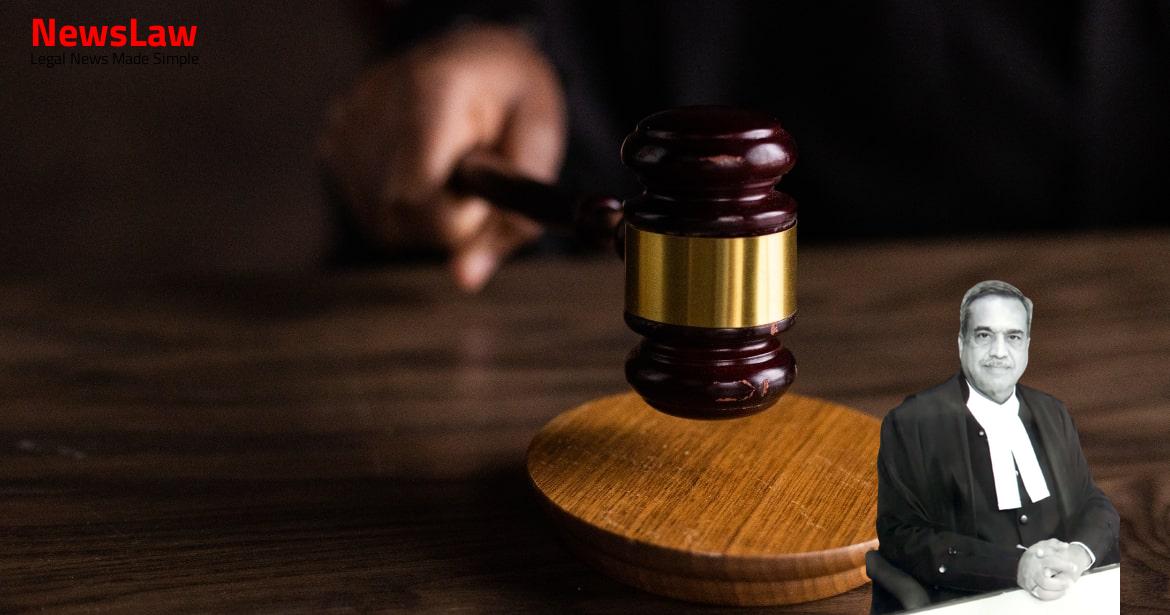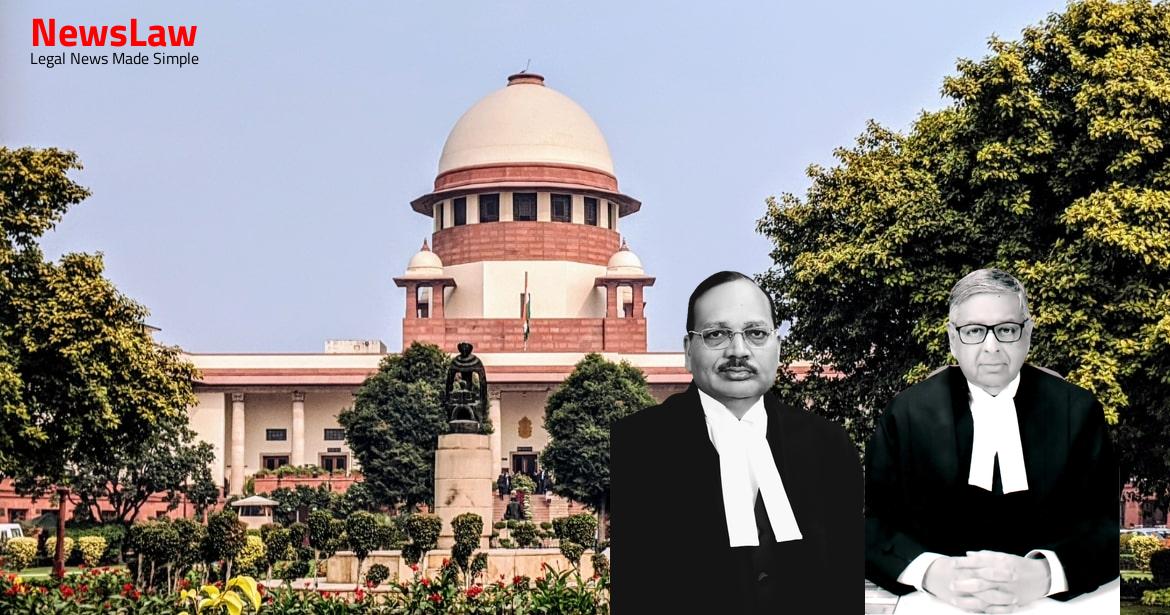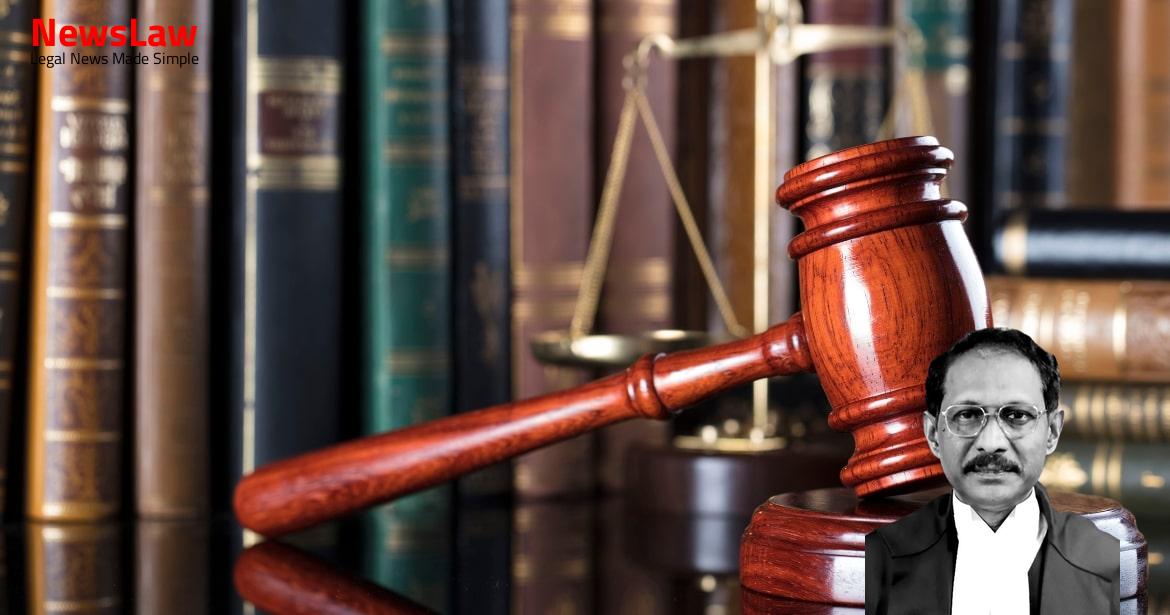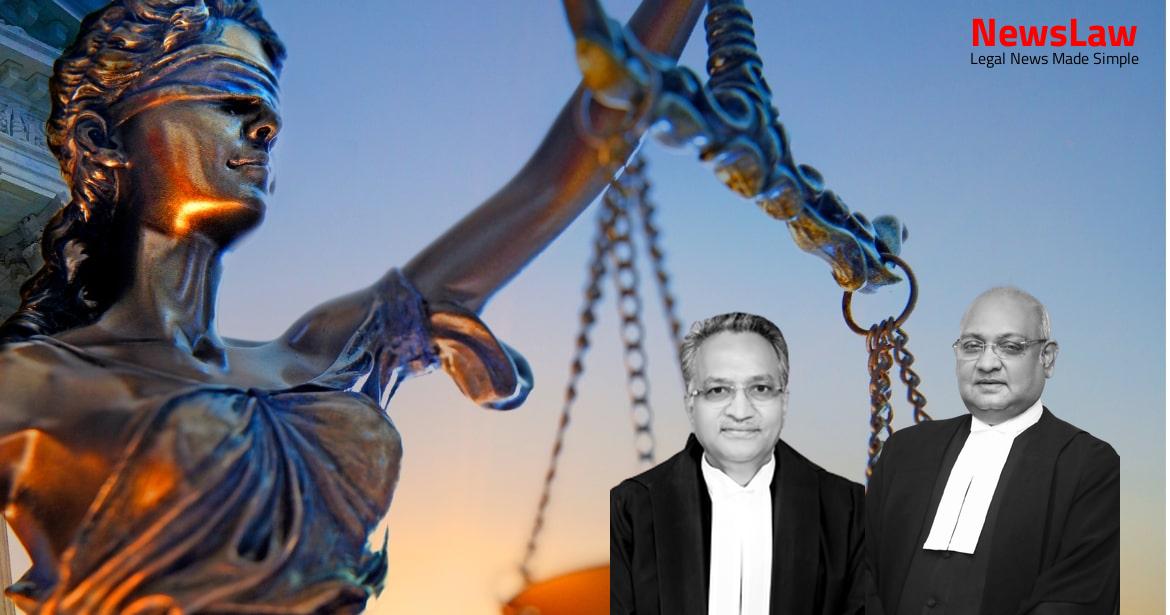Explore the intricate legal analysis conducted by the High Court in a significant case involving the reversal of an acquittal. The court’s thorough examination of witness credibility, evidence evaluation, and factors influencing the judgment provides valuable insights into the nuances of the legal system. This blog post delves into the intricacies of legal reasoning that led to the overturning of the acquittal, highlighting the importance of a meticulous review of all aspects of a case.
Facts
- The deceased fell down on earth, and brain matter had been liquefied.
- A chargesheet was filed against all the accused under Section 302/34 IPC for the murder of the deceased Ram Aasare Pathak.
- Eight witnesses were examined by the prosecution to prove the case.
- The accused denied the charges and came to be tried for the offenses.
- The deceased was attacked by the accused with spear and lathis.
- The post-mortem report indicated the cause of death as shock and hemorrhage due to severe injuries.
- The deceased received instantaneous death at the spot.
- The High Court reversed the judgment of acquittal and convicted the appellant – original accused no.4.
- The trial Court acquitted all accused based on the grounds that eyewitnesses were related and interested witnesses, with no independent witnesses examined.
- The trial Court noted that PW2 and PW4, sons of the deceased, may be considered as chance witnesses.
- The trial Court found that the prosecution failed to prove the place of occurrence.
- The High Court, during the appeal process where some accused had expired, convicted the appellant for the offences under Section 302/34 IPC.
- The High Court pointed out the absence of fire injuries on the deceased, lack of explanation for the injuries on accused Murlidhar Pathak as key factors in overturning the acquittal.
Also Read: Electoral Malpractices in Mayor Election
Arguments
- The High Court is justified in reappreciating the entire evidence on record as the first appellate court.
- Reliance placed on the case of Umedbhai Jadavbhai v. State of Gujarat (1978) 1 SCC 228.
- The prosecution has established the actual place of the incident and explained the injuries on one of the accused.
- Interference with an order of acquittal by the High Court is not warranted when two views are possible and the trial court’s decision is based on evidence.
- The High Court considered the grounds of acquittal and found them tenable, leading to the conviction of the accused.
- Enmity between the deceased and accused is acknowledged even by the appellant – original accused no.4.
- Arguments opposing the appeal made by the State are in favor of upholding the High Court’s decision.
- The appellant argues that the High Court exceeded its jurisdiction in reversing the acquittal order, but the trial court’s decision was sound.
- Motive was not convincingly established, and key witnesses are related and interested parties.
- Lack of independent witnesses and chance witnesses, according to the appellant’s counsel.
- Medical evidence, including the absence of firearm injuries, disproves the prosecution’s case.
- Challenges to the FIR’s credibility, failure to explain injuries on an accused, and lack of proof for the exact occurrence location.
- Reliable and trustworthy witnesses are important, even if independent witnesses are not examined.
- Deposition of eyewitnesses indicated a fire shot was fired in the air with no injury caused.
- Trial Court cited lack of independent witnesses as a reason for acquitting the accused.
- Trial Court also mentioned the absence of firearm injury or recovery as a factor in the acquittal.
- Appellant argues that unless the trial judge’s decision was proven to be perverse, the High Court should not have overturned the acquittal based solely on evidence appreciation.
Also Read: Balancing Power and Transparency: Electoral Bonds Struck Down, Disclosure Mandated
Analysis
- The High Court reversed the acquittal without considering the reasons given by the trial court for acquitting the accused.
- Non-explanation of injuries of the accused is a factor to be considered in evaluating prosecution evidence.
- The presence of witnesses PW2 and PW4, despite being termed as chance witnesses, strengthens the prosecution’s case.
- The place of occurrence was proven by the prosecution based on evidence and the FIR.
- The need to explain serious injuries of the accused arises in the same occurrence.
- The appellate court should not set aside a judgment of acquittal when two views are possible, unless the trial court’s view is perverse.
- The High Court’s interference with the trial court’s acquittal was justified based on a review of the entire evidence.
- The reliability of eyewitness testimony from PW4 supported the prosecution’s case.
- The defence’s contentions regarding injuries and enmity were considered by the High Court.
- The High Court had the authority to review the evidence and reach its own conclusions in an appeal against an order of acquittal.
- In cases where the trial court’s decision is based on fanciful doubts, rejection of creditworthy evidence, or barely possible interpretations, the High Court can intervene in the interest of justice.
- The High Court should give due weight to the trial court’s assessment of witness credibility as the trial court had the opportunity to observe witness demeanor.
- An order of acquittal should not be interfered with lightly, even if there is some evidence pointing towards the accused.
- A finding may be considered perverse if it goes against the weight of evidence or defies logic.
- The High Court must consider the trial judge’s views on witness credibility, the presumption of innocence, and the benefit of any doubt given to the accused.
- In exceptional cases, where the judgment is found to be perverse, the appellate court can interfere with an order of acquittal.
- Non-examination of independent witnesses may not be fatal to the prosecution’s case if the prosecution witnesses are reliable.
- The High Court can reevaluate the evidence independently and come to its own conclusion in an appeal against an order of acquittal.
- Mere non-examination of independent witnesses does not necessarily invalidate the prosecution’s case if reliable eyewitness evidence is present.
- The High Court’s view is agreed upon
- Accused has been assigned a specific role
- Evidence from PW4 confirms the established role
- No error in High Court’s decision to overturn the acquittal
Also Read: Recall of Resolution Plan Approval: Legal Analysis
Decision
- Appellant Guru Dutt Pathak was granted interim bail until 30.04.2021.
- The interim bail has not been extended by the Court.
- The present appeal has been dismissed.
- If the accused, Guru Dutt Pathak, has not surrendered yet, he must do so immediately to serve the sentence.
Case Title: GURU DUTT PATHAK Vs. THE STATE OF UTTAR PRADESH HOME DEPARTMENT STATION HOUSE OFFICER (2021 INSC 285)
Case Number: Crl.A. No.-000502-000502 / 2015



